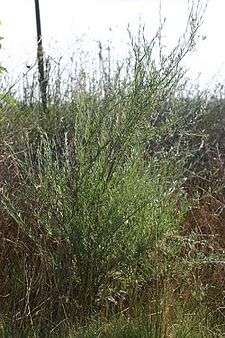Salix sessilifolia
| Salix sessilifolia | |
|---|---|
 | |
| Scientific classification | |
| Kingdom: | Plantae |
| (unranked): | Angiosperms |
| (unranked): | Eudicots |
| (unranked): | Rosids |
| Order: | Malpighiales |
| Family: | Salicaceae |
| Genus: | Salix |
| Species: | S. sessilifolia |
| Binomial name | |
| Salix sessilifolia Nutt. | |
 | |
| Natural range of Salix sessilifolia | |
| Synonyms | |
| |
Salix sessilifolia is a species of willow known by the common name northwest sandbar willow. It is native to the west coast of North America from British Columbia and the US states of Washington and Oregon.[1] It grows on sandy and gravelly riverbanks, floodplains, and sandbars.
Salix sessilifolia Nutt. is a shrub growing 3 to 5 meters in height, sometimes forming colonial thickets of clones by sprouting repeatedly from its root system. The leaves are up to 12 centimeters long, oval with pointed tips, edged with spiny teeth, and generally coated thinly in silky hairs. The inflorescence is a catkin of flowers, male catkins up to 4.5 centimeters long and female catkins longer and more slender.
References

Natural range
External links
| Wikimedia Commons has media related to Salix sessilifolia. |
This article is issued from Wikipedia - version of the 1/4/2014. The text is available under the Creative Commons Attribution/Share Alike but additional terms may apply for the media files.